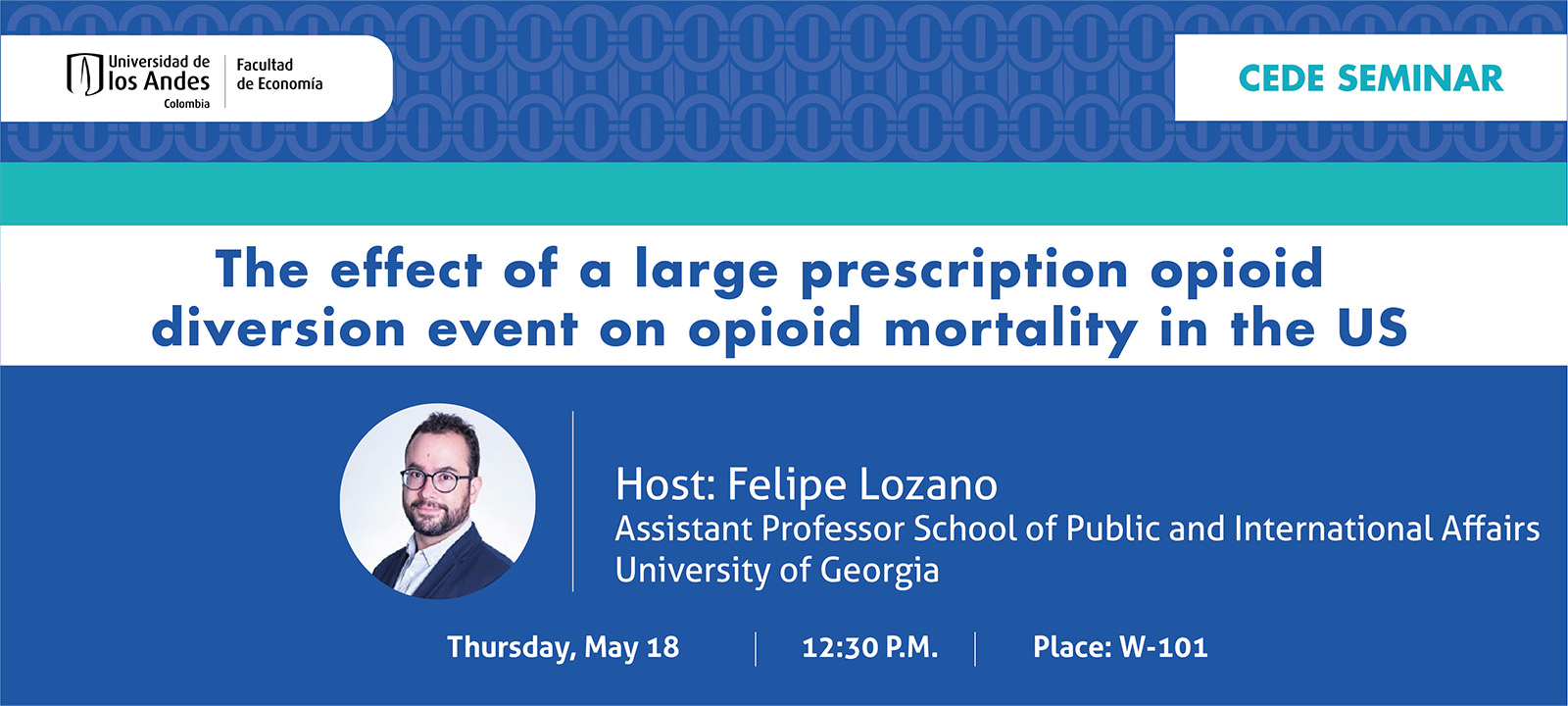CEDE Seminar - Felipe Lozano Clavijo

Over a two-week span in December 2007 a massive spike of prescription opioids surged suddenly into retail pharmacies in 78 counties in five Southeastern U.S. states. These “spike counties” experienced an average increase in opioid deliveries of 313\% over baseline, with one Mississippi county experiencing a 1300% increase. The magnitude of this surge was over 3.4 billion morphine milligram equivalent units - more than 147 million standard doses. The pattern of facts available is consistent with the hypothesis that Colombian drug cartels became suddenly unable to launder large amounts of physical cash at the end of 2007 at a time when their capacity to supply eastern US heroin markets was failing and therefore used their excess physical cash to acquire prescription opioid products which could then be diverted to the illicit drug market in the US east of the Mississippi River. Importantly, any relative increase in prescription opioids (manufactured with very tight therapeutic windows) in the illicit market would be expected to displace heroin at least partially (manufactured with varying potency which cannot be known prior to consumption), implying the spike in diversion amounted to an unplanned harm-reduction shock for prior heroin or other non-prescription opioid users. We estimate novel difference-in-differences models of substance-specific opioid mortality, using counties west of the Mississippi River as controls, and the geographic distance to a spike county as the intensity of treatment. We find that in the two years following the shock, there were fewer deaths from heroin and all non-prescription opioid mortality in localities up to 200 miles (driving distance) from spike counties, with benefits becoming generally smaller and statistically insignificant beyond that point. We argue that these reductions can be directly attributed to the diversion and account for 448 lives saved in the spike counties’ vicinity per year, or nearly 30% of heroin deaths in those areas.

